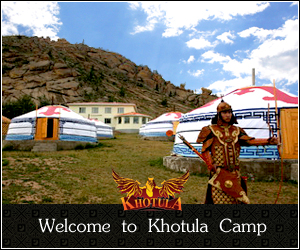Dancing in Mongolia
Mongolian dance began as a ritual performance imitating the movement and manner of deities, mystical creatures and legendary heroes. Shamanist perception of the surrounding world and worshipping of Mother Nature influenced the style of ancient dancing, as well as the shape and pattern of clothing and accessories. The great variety of folk dancing has been enriched by clans, tribes and generations of performers. Besides folk dances, there were special palace dances and religious dances.
Organized professional dance performance date from 1924. The establishment of the State Central Theater in 1931 opened a new era for professional and career dancing. In 1941, the Army dancing branch was formed, and in 1956 European dance began in Mongolia. The first generation of the Mongolian ballet dancers was trained in the USSR. B. Jamyandagva was the first ballet master of Mongolia and is the father of the national ballet.
The State Theater of Opera and Ballet was founded in 1963. Since then, over 20 world classics including “Swan Lake”, “Nutcracker”, “Romeo and Juliet”, “Giselle”, and “Don Quixote”, and more than 20 national classics have been performed on the Mongolian stage by national dancers. With the democratic changes in Mongolia beginning in the 1990s, a new generation of dancers is introducing modern dance. Despite the strivings of young talents, there are many obstacles to the development of Mongolian modern dance to an international level. They still face lack of experience, financial shortcomings, poor management of foreign relations, etc.















